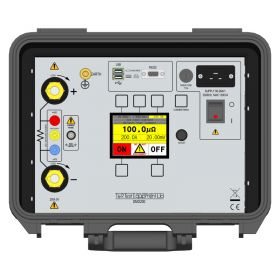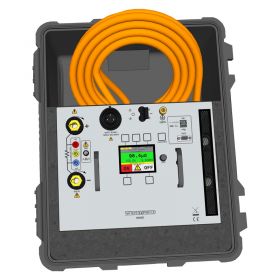The store will not work correctly in the case when cookies are disabled.
About Low Resistance Ohmmeters
Ohmmeters are portable devices that are used by electricians to accurately measure the resistance opposing electrical current on circuitry.
Generally, the ohmmeter family is divided into two distinct types. Micro-ohmmeters (also known as microhmmeter) are capable of making low
resistance measurements, but can't be used to measure larger values of resistance like you may find on high-voltage equipment. The other form,
the megohmmeter, can measure incredibly large levels of resistance and is a great solution for those working with higher levels of resistance.
While traditionally the ohmmeter displayed resistance as movement on a galvanometer scale, this has now been generally phased out in favour of
digital technology. Rather than getting fluctuating readings from a needle scale, a digital ohmmeter will accurately output the resistance of a
circuit as a definitive number, allowing you to quickly tell exactly what the reading is. The inclusion of digital interfaces also means you can
use a wide variety of different extra features (depending on which model you're using) including built-in-memory of test results, onboard keyboard entries, and more!
To obtain truly high-precision readings of resistance, the ohmmeter must have four terminals named Kelvin contacts. This forces the
ohmmeter to ignore readings that interfere with the overall accuracy of the test, as when an ohmmeter calculates resistance it generally displays
the sum of the resistance of the measuring leads, the contact resistances, and the resistance being measured itself.
Milliohm meters - also known occasionally as the aforementioned microhmeters -are used to accurately make low resistance measurements on
equipment that requires sensitive testing procedures. Such examples include the testing of PC equipment, which has delicate internal parts
that could be damaged by excessive testing.

 Free UK DeliveryT&R DMO200 Digital Micro-OhmmeterCall for Pricing
Free UK DeliveryT&R DMO200 Digital Micro-OhmmeterCall for Pricing
 Free UK DeliveryT&R DMO600 DC Digital Micro-OhmmeterCall for Pricing
Free UK DeliveryT&R DMO600 DC Digital Micro-OhmmeterCall for Pricing

